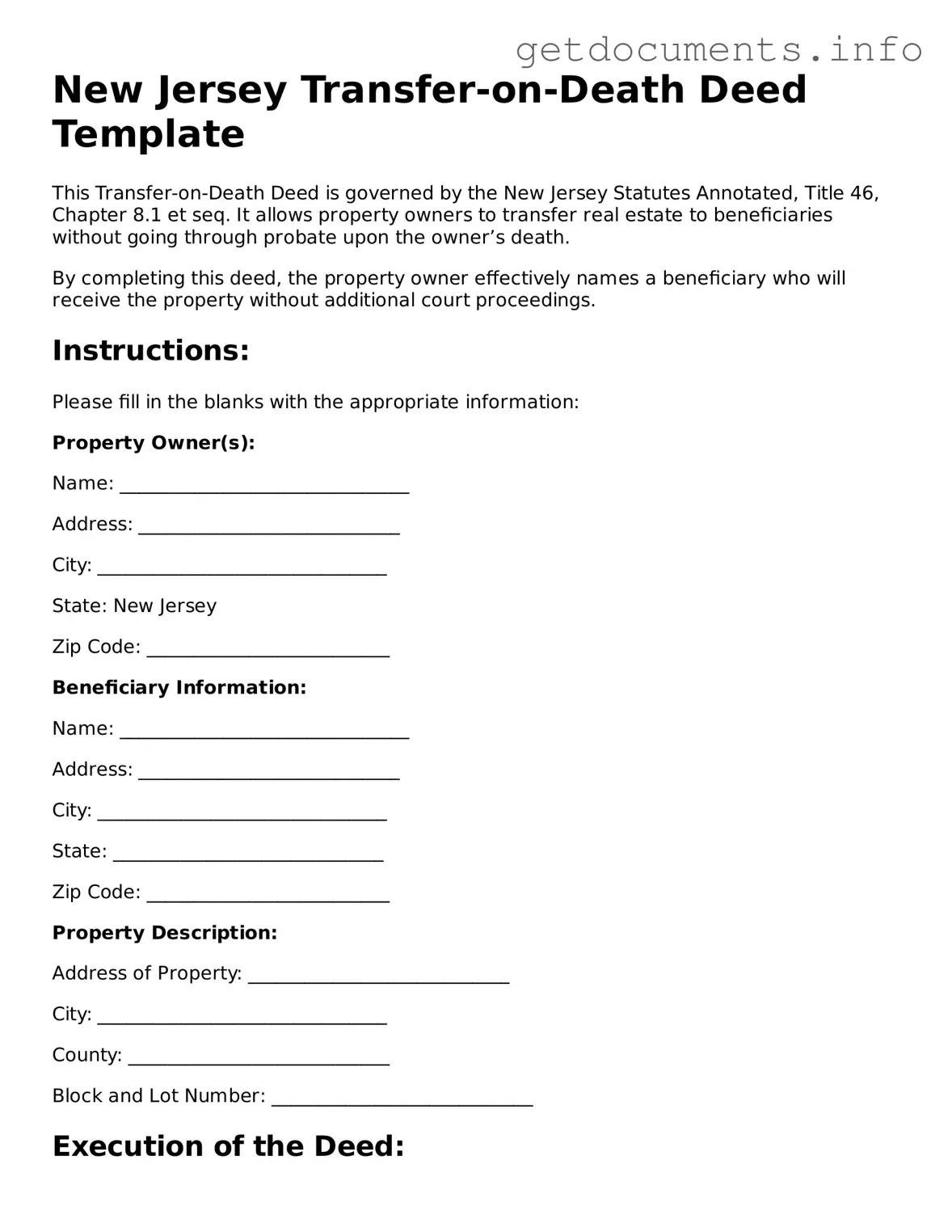Free Transfer-on-Death Deed Template for New Jersey
The New Jersey Transfer-on-Death Deed form allows property owners to designate a beneficiary who will receive their real estate upon their death, bypassing the probate process. This form provides a straightforward way to ensure that your property is transferred according to your wishes. To get started, fill out the form by clicking the button below.
Access Transfer-on-Death Deed Editor
